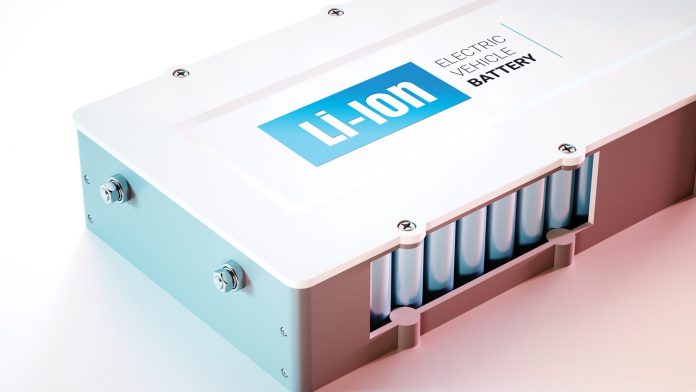Solid state Lithium-ion polymer batteries were developed due to a number of worrying properties that arose from using liquid electrolytes in a battery rather than a solid conductive material.
Innovation News Network spoke to Dr Lorenzo Grande, senior technology analyst at IDTechEx, about the history, development and future sustainability of solid state Lithium-ion polymer batteries, outlining their benefits and shortfalls.
Batteries which use liquid electrolytes are highly flammable and if the battery is placed under large pressures, for example charging too quickly, this could cause the liquid electrolyte inside the battery to explode or set on fire. In light of this, a lot of research has been undertaken in the development of a suitable solid state polymer battery for safe commercialisation, particularly for the use in electric vehicles – highly flammable batteries are not something we want attached to our cars.
What was the inspiration behind the development of solid state Lithium-ion polymer batteries, and what was the development process?
It is imperative to begin such a discussion by talking about non-polymer solid-state batteries. The first lithium-based solid-state battery was the lithium-iodine battery. In this device, a sheet of lithium (Li) metal is placed in contact with solid iodine. The two materials behave like a short-circuited cell and their reaction leads to the formation of a lithium iodide (LiI) layer at their interface. After the LiI layer has formed, a very small, constant current can still flow from the Li anode to the I2 cathode for several years. Thanks to this property, Li-I2 batteries were commercialised in the early 1970’s to power pacemaker devices.
Outside of the lithium space, ZEBRA batteries can also be counted in the solid-state family. In this system, a metallic sodium anode melts and coats the β’’-alumina solid electrolyte, enabling the reversible charge and discharge of the cell. The heat dissipated during operation keeps the battery constantly at around 300°C, which is the operational temperature of the sodium–sulphur (Na-S) battery. Na-S batteries are very cheap and are normally used for stationary storage.
In the case of polymer-based batteries, they were developed in the early 1990s in France, which is where the only existing manufacturer in the world produces them. Blue Solutions, a subsidiary of French company Bolloré, manufactures Li-ion polymer batteries which normally operate at 60°C. Their main application is currently in electric cars used for car sharing, but the company is also working on stationary storage solutions, as well as battery packs for buses and commercial vehicles.
Why are solid state Lithium-ion polymer batteries considered to be ‘better’ than using liquid electrolytes, what are the main benefits from greater research and innovation into their development?
Low flammability is one of the main advantages. Liquid electrolytes are made up of flammable organic chemicals, which can be a threat. While puncturing a gasoline tank does not necessarily lead to a fire, performing the same operation on a Li-ion battery always result in nasty chemical fires that cannot be dealt with by using traditional methods. For instance, pouring water on a battery that is on fire just makes matters worse, as hydrogen can form and ignite. For this reason, some believe that substituting the liquid electrolyte with a polymeric one can eliminate or slow down such fires. The truth is that often polymeric batteries contain metallic lithium anodes, which are also extremely flammable. The real solution would be to build batteries with non-flammable anodes (like graphite or silicon) and polymer electrolytes. This is, however, far from trivial and does not always lead to a net increase in battery energy density.
Are there any manufactural challenges related to solid electrolytes?
Polymeric ones can be easily manufactured, although the total thickness is still too high for practical applications (less than 10 microns are needed to compete with the state of the art). In the case of inorganic solid electrolytes, no-one has figured out a way to produce these materials on a large scale. There are some pilot projects around, like the one set up by Solid Power in Colorado, USA, but most companies are still grasping for straws in this respect.
Gel polymer electrolytes enable room temperature operation, but they are only a bridge technology to fully solid ones, as they still use copious amount of flammable liquid electrolytes. A number of researchers are developing hybrid batteries, which provides elements of both solid and liquid electrolytes without the disadvantages of the latter.
Solid state Lithium-ion polymer batteries have been expressed as a possible contender for use in electric cars. What are their operational uses, how popular are they for electric vehicles and is this something researchers should be pursuing?
They are not popular at all if we look at electric cars on the road that have them. Solid electrolytes are the main technology that car companies can still try to develop in-house to gain a competitive advantage over other original equipment manufacturers (OEMs). This is why most of them have a stake in a company developing solid or novel electrolytes. The Li-ion battery market is reaching commoditisation, which means that the Daimlers and BMWs around the world need to be able to supply their users with certain unique selling points in order to maintain market leadership. Currently, this is represented by the excellent combustion engines they make, but electrical motors cannot take that spot. This is why car companies aim at developing better batteries than their competition.
Going forwards into the future, which batteries do you believe are going to be the most beneficial and the most effective?
Batteries based on solid electrolytes are definitely an enabler for high voltage cathodes, which is the single most effective way to boost driving range. Range anxiety is currently one of the main factors hindering electric vehicle adoption.
IDTechEx has recently released a new report on the topic, Solid-state and polymer batteries 2019-2029: Technology, Patents, Forecasts; which can be accessed at www.idtechex.com/solid
Lorenzo Grande
Senior Technology Analyst
IDTechEx







